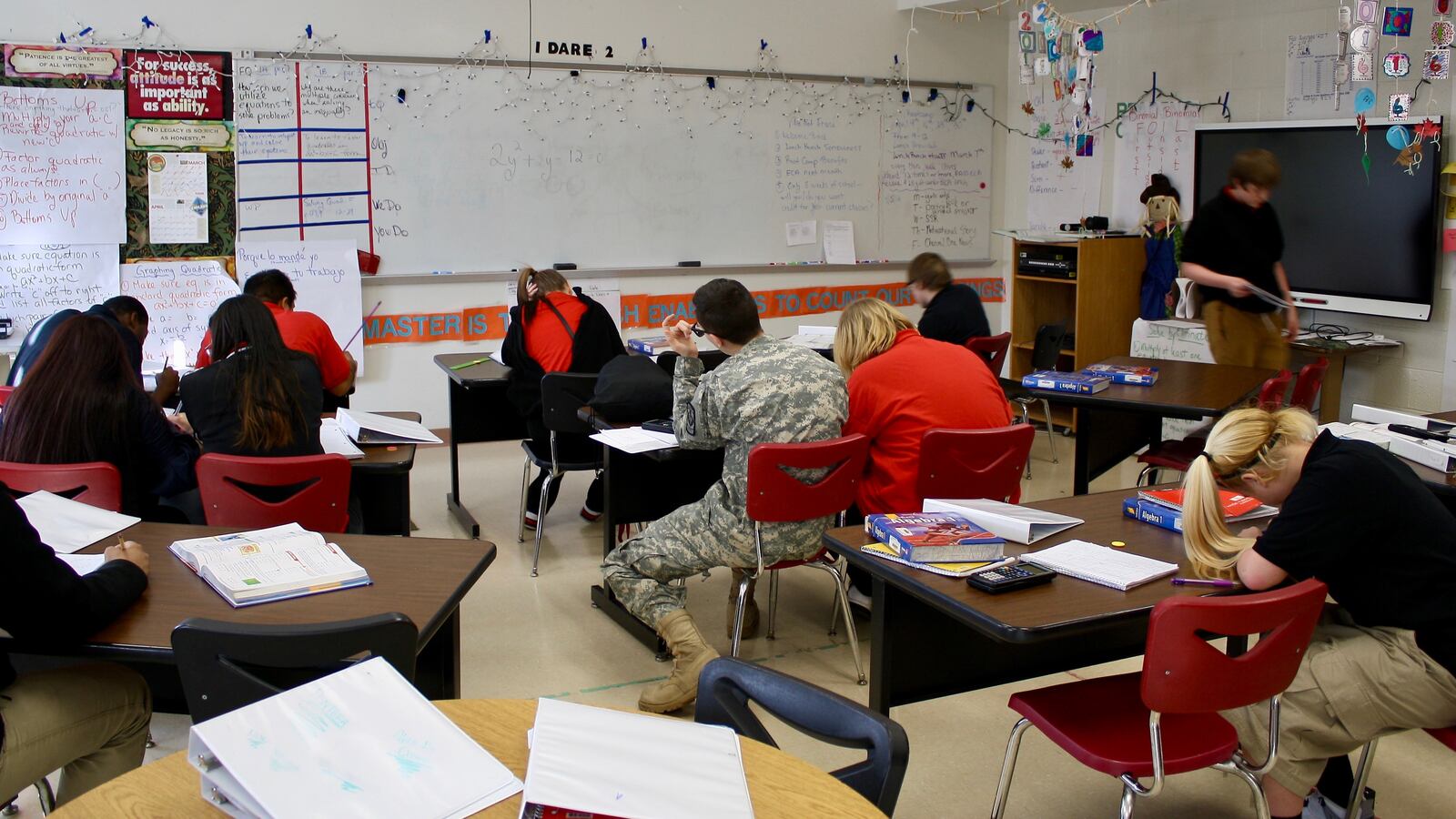Seven years after Indiana seized control of four failing schools from the Indianapolis Public Schools district, state officials must now decide the fate of three of those campuses.
State control of Emma Donnan Middle School and Howe and Manual high schools, which are managed by an outside charter network, is expected to end in just over a year. But just what will happen next is still uncertain.
It’s the final leg of a tumultuous journey for Indianapolis after the state, in a radical step, took over four failing schools with the promise that new managers would be able to succeed where the district had failed.
So far, the three schools have had mixed academic results. The state grades at Manual, which enrolls about 700 students, and Emma Donnan, which has about 300, have risen to Cs, but Howe, which has about 600, has gotten an F every year since it was taken over.
Now, it’s up to the Indiana State Board of Education to decide the future of the schools. The board will vote to instruct operator Charter Schools USA to take the steps needed to continue running the schools, to close the campuses, or to return them to the district, which will likely also result in their closure. So far, parents, alumni, and residents have favored allowing the schools to stay with Charter Schools USA so that they will remain open.
A special task force is expected to make a recommendation to the board next month. The state has previously extended the contract with CSUSA, delaying the decision over what to do with the schools.
“The community is really excited about the future of these schools and cares deeply about these schools,” said state board member David Freitas.
The task force has collected extensive feedback through a series of meetings at the schools and in the surrounding neighborhoods, said Charles Schlegel, a consultant brought in to run the process.
Katie Parker said at a forum on Wednesday in the southside neighborhood near Manual and Emma Donna that she wants the schools to remain with CSUSA because it is the only option that would keep them open. She and her husband want the neighborhood to have a school once they have children.
“We also paid for our house and want it to keep up its value,” she added. “So it’d be really nice if there weren’t … abandoned buildings around the neighborhood.”
Aryn Schounce, a task force member representing neighborhoods on the south side, said some people want more options for the future of Manual, such as new partnerships with other charter schools to share the under-used building or a technical training school that harkens back to the southside high school’s history.
“There’s just a big question about what really is the vision and what distinguishes CSUSA from other charter operators and what distinguishes them from IPS,” she said. But ultimately, “I don’t think anyone in the community wants to see these schools close.”
Residents have raised concerns, however, about the long-term financial sustainability of the schools. If they become charter schools, they would lose out on special funding they are getting because they are overseen by the state. Schlegel estimated funding would go down by 10 to 12 percent.
Ed Mahern, a longtime resident of the Garfield Park neighborhood, said that many nearby families send their children to other school districts or charter schools, rather than Manual. He is concerned the building is far too large for the number of students it now serves.
He questioned how the schools would be able to afford to continue operating. “A charter school is going to get less money per student than what they’ve been getting,” he said.
Eric Lewis, the state director of Indiana for CSUSA, said the schools would be financially sustainable even if they only receive the per-student funding and state grants for which charter schools are eligible. They would have to cut back on some services, such as eliminating some master teachers and ending bus transportation for students who stay after school for tutoring.
“We use school improvement dollars specifically for the turnaround,” Lewis said. “When you don’t have those anymore, just like every other school in the state, you have to use what you have to be able to drive sustainability.”
The fourth school that had been taken over by the state, Arlington High School, was handed back to the district and eventually closed after the local charter operator pulled out.
Although the high schools face the possibility of closure if returned to the district, the situation with Emma Donnan is slightly different. In 2015, CSUSA opened an elementary school in the building that is part of the Indianapolis Public Schools innovation network. As an innovation school, it is overseen by the district but managed by an outside operator. If the agreement is renewed, the elementary school could expand to eighth grade, essentially absorbing the original middle school.
There has been a sea change in strategy since the schools were taken over 2012. The state has not taken any campuses from Indianapolis Public Schools, instead relying on less extreme measures, such as a “transformation zone,” which offers extra coaching and oversight at the district’s most troubled schools.
At the same time, local officials have become more aggressive in their response to chronically failing schools. Indianapolis Public Schools has brought in charter operators to run six failing schools. While the model mirrors state takeover in some ways, the district maintains oversight over innovation schools.

